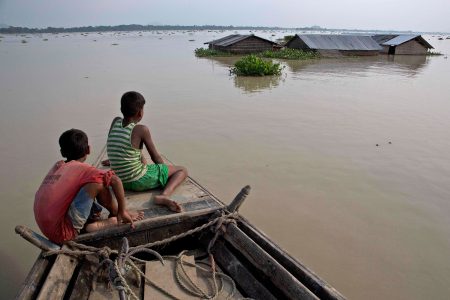
March 13, 2018 – I have been a member of Kiva.org since shortly after it was founded. Kiva was started by an American couple to provide a capital pool for the funding of entrepreneurs and those with the need for capital in Developing World countries. Today it even provides loans to Americans who need small amounts to fund projects and cannot access capital by other means. In the years since I became a member, I have lent over $1,600 U.S. in 64 loans spread over 28 countries. These loans helped entrepreneurs set up or restock general merchandise stores, buy seed and livestock, start a small taxi service, and help small collectives in many rural villages in countries in Africa, Asia, Central, and South America. 75% of my loans have been made to women who are the fastest growing entrepreneurial group on the planet. None of my loans of $25 each, pooled with others making similarly sized investments, has ever addressed overcoming a climate change or extreme weather issue. But now there are organizations using the micro-loans model to do just that.
Microfinancing clearly works when dealing with families, groups and individuals motivated to build a business or improve themselves with the assistance of repayable loans. But can it work to pull people back from the brink of a major natural disaster such as a hurricane, or to help implement adaptation or mitigation strategies to combat the impact of climate change?
VisionFund, a microloan charity currently lists on its website over 1.25 million borrowers with an average loan of $552 U.S. distributed over more than 30 countries in Africa, Asia, Latin America, the Middle East, and Eastern Europe, and a portfolio totaling more than $621 million. The organization focuses on the poorest communities where its loans can make the most significant impact, places where people live on less than $2 per day.
VisionFund’s latest foray is into climate insurance with the launch of a program for Africa and Asia. The target is to benefit more than 690,000 families, some four million people living in six low-income countries by providing them with climate insurance. They call the program the African and Asian Resilience in Disaster Insurance Scheme (ARDIS). ARDIS gives policyholders swift access to credit in the event of a climate shock. Microloans are managed by local financing partners and get quickly disbursed to limit disruption after a climate-related calamity. The presence of this type of quick capital makes all the difference to small farms and businesses hit by natural disaster disruptions. In these events, normal loan providers like local banks are usually slow to respond. And often so are local and state governments.
Michael Mithika, President, and CEO of VisionFund International states, “ARDIS uses an innovative financing structure making recovery lending scalable. This scalability means greater opportunities for more people to access emergency finance to restart businesses and restore incomes. We’ve already seen the benefits of recovery lending initiatives in sub-Saharan Africa in 2016/2017. “
Partnering with VisionFund is Global Parametrics, a for-profit venture with financial disaster risk management solutions aimed at helping poor and vulnerable populations. Together the two have set up a new venture that also includes the United Kingdom’s Department for International Development, the InsuResilience Investment Fund from Germany’s development bank KfW, BlueOrchard Finance, a Swiss-based impact investment manager, the Rockefeller Foundation, and FMO, the Dutch development bank.
Microfinancing, in the age of climate change, could make an enormous difference to the most vulnerable populations on the planet. It is good to see large institutions getting into this area of investment rather than just writing cheques and claiming charitable tax deductions in the aftermath of disasters. It also brings global capital markets front and centre into these two important realms: microloans, and insurance risk coverage. The initiative has set a target of 1% of the G7 goal to insure vulnerable people, in Developing World countries, giving them access to instant capital when climate change creates the need.









